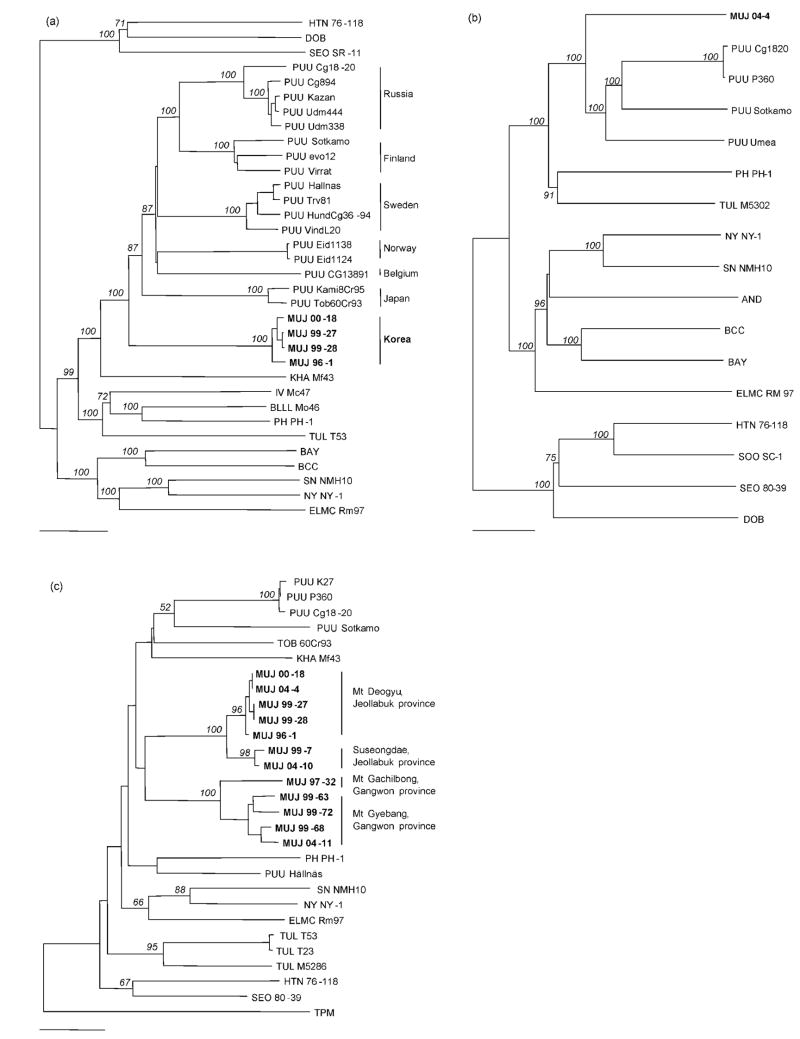Fig. 2.
Neighbour-joining phylogenetic trees based on the full-length S segment (a), the full-length M segment (b) and a 208 nt region (nt 1032–1239) of the S segment (c) of MUJV strains and other arvicolid rodent-borne hantaviruses, including Puumala (PUU), Tula (TUL), Khabarovsk (KHA), Isla Vista (IV), Bloodland Lake (BLLL) and Prospect Hill (PH) viruses. The phylogenetic positions of hantaviruses harboured by murid rodents, including Hantaan (HTN), Seoul (SEO), Soochong (SOO) and Dobrava (DOB) viruses, and those carried by neotomine and sigmodontine rodents, including Sin Nombre (SN), New York (NY), El Moro Canyon (ELMC), Black Creek Canal (BCC), Bayou (BAY) and Andes (AND) viruses, are also shown. Thottapalayam (TPM) virus is a prototype shrew-borne hantavirus. The numbers at each node are percentage bootstrap probabilities, as determined for 1000 iterations using PAUP version 4.0. The GenBank accession numbers for the MUJV sequences are provided in Table 2. Bars, 0.05 substitutions per site.

